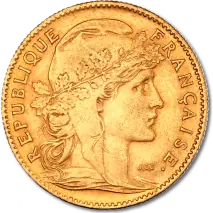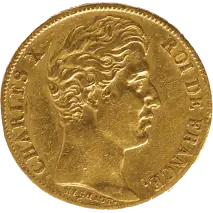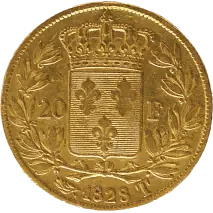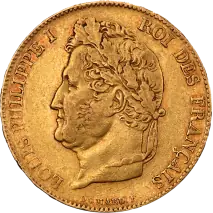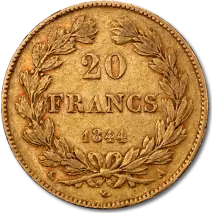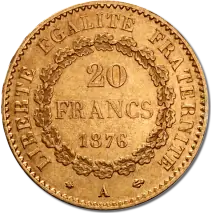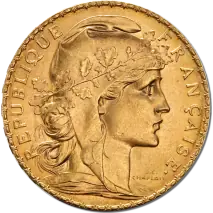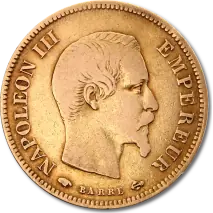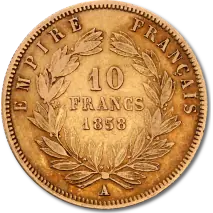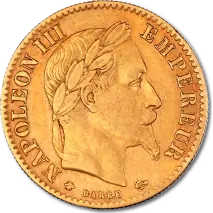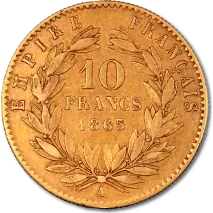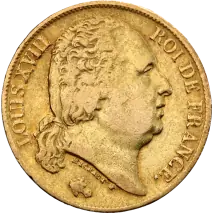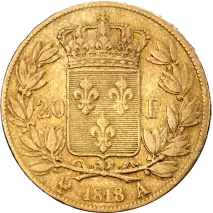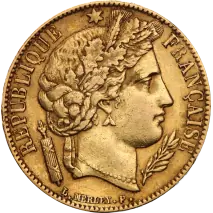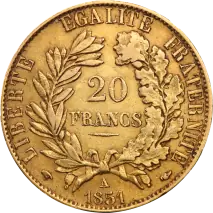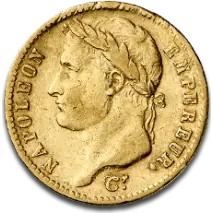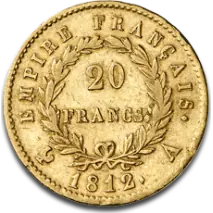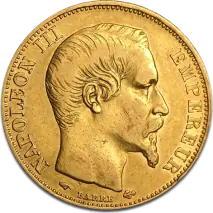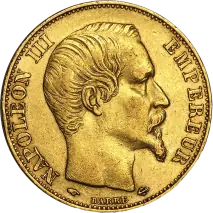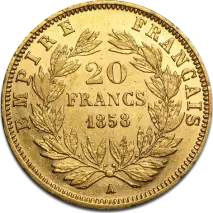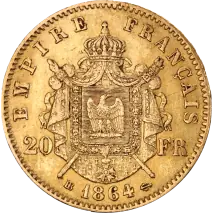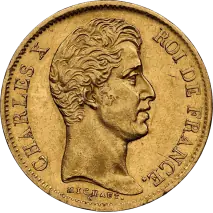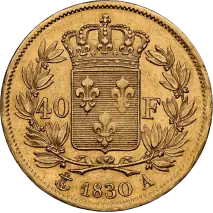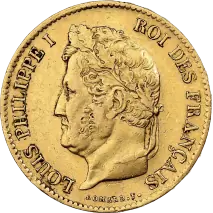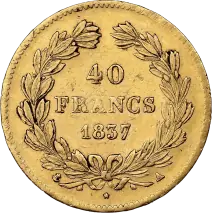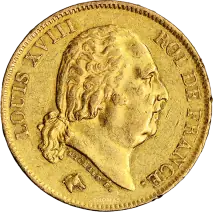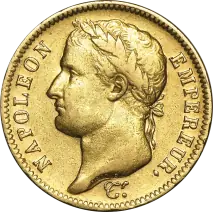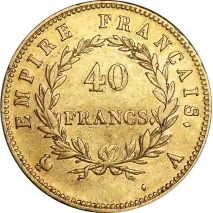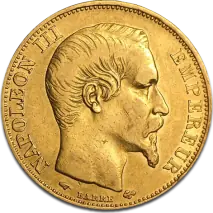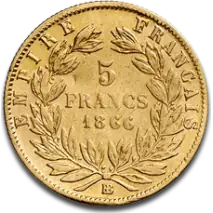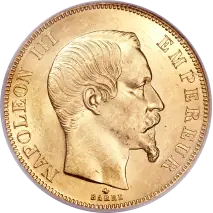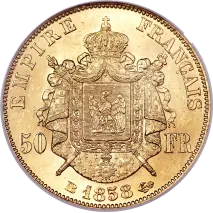French Franc Coins
Buy French Franc gold coins in the UK
Invest in Gold French Franc coins with StoneXBullion, your trusted platform for buying investment-grade gold coins and bars. Since 2006, we’ve helped more than 100,000 investors buy and sell gold online.
All Gold Franc coins sold by StoneXBullion are fully authenticated and shipped with discreet, fully insured delivery across the UK and Europe.
What are Gold French Franc coins?
Gold French Francs were introduced by Napoleon Bonaparte in 1803 and continued to be minted through various French republics and empires until the early 20th century. These coins are amongst Europe's most recognisable historical bullion issues and were widely used across the continent as part of the Latin Monetary Union.
Key features of Gold French Francs coins:
- Purity: 90% gold
- Denominations: 5, 10, 20, 40, and 50 Francs
- Gold content: 2.90 grams per 10 Franc, with gold content increasing or decreasing by denomination
- Designs: Various French rulers and symbols, including Napoleon Bonaparte, Napoleon III, Louis XVIII, Charles X, Marianne, and the Gallic rooster.
- Highly liquid: Widely traded across Europe and in global bullion markets.
Why invest in Gold French Francs?
Gold French Francs offer a blend of bullion value and historical significance. Here’s why they make a great investment:
- VAT-free: Gold French Francs are classed as investment-grade gold, making them VAT exempt in the UK
- Historic significance: These coins celebrate the rich history of France and are relatively rare today, adding numismatic value
- Affordable entry point: Gold Francs often have lower premiums than many modern gold coins
- Diverse designs: Collectors can choose from classic designs like the Marianne Rooster or Napoleon III.
Popular Gold French Franc types
Our collection of Gold French Francs includes coins from several issues and denominations.
20 French Franc Marianne Rooster (1899-1914)
The 20 Franc Marianne Rooster is the most widely traded French bullion coin and was last minted in 1914.
- Purity: 90% gold
- Pure gold content: 5.80 grams
- Design: Marianne (symbol of liberty & reason) on obverse, Gallic rooster (national symbol of France) on reverse.
50 French Franc Napoleon III (1855-1860)
The 50 Franc Napoleon III is popular for its historical significance.
- Purity: 90% gold
- Pure gold content: 14.525 grams
- Design: Bust of Emperor Napoleon III (Napoleon Bonaparte’s nephew) on the obverse and French coat of arms on the reverse.
Other popular French Franc coins
Other popular Gold French Franc coins include:
- 5 French Francs Napoleon III
- 40 French Francs Louis Philippe
- 20 French Francs Charles X
- 20 French Francs Ceres 2nd Republic
- 20 French Francs Napoleon Bonaparte
- 40 French Francs Louis XVIII
How to buy Gold French Francs in the UK
Buying French Franc gold coins with StoneXBullion is quick, simple, and secure:
- Browse our selection: Choose from 5, 10, 20, 40, and 50 Franc coins featuring Marianne Rooster, Napoleon, Louis XVIII, and other designs
- Check live pricing: We update prices every 60 seconds based on global gold markets
- Make secure payment: Complete checkout via bank transfer or credit card
- Receive insured delivery: All orders are fully insured and discreetly packaged for UK and European delivery.
Gold French Francs: FAQs
Are Gold French Francs VAT-free in the UK?
Yes, Gold French Francs are classed as investment-grade gold, making them VAT exempt in the UK.
What purity are Gold Franc coins?
Gold French Francs are struck from 90% pure gold, following the Latin Monetary Union standard.
How much gold is in a 20 Franc coin?
Each 20 Franc gold coin contains approximately 5.8 grams of pure gold.
Are French Francs a good investment?
Yes, French Francs offer excellent liquidity, competitive premiums, and historical appeal.
Which Gold French Franc is most popular?
The 20 Franc Rooster (1899-1914) is considered to be the most widely traded Franc bullion coin.
Invest in Gold French Francs today
Buy Gold French Franc bullion coins online with StoneXBullion, trusted by over 100,000 investors across the UK and Europe. Enjoy live pricing, secure checkout, and fully insured delivery direct to your door.
Browse our full range of French Francs and start your gold investment journey today.

